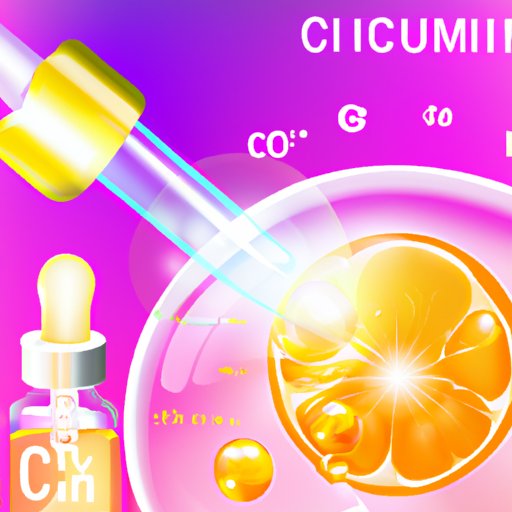
Introduction
Vitamin C and hyaluronic acid are two incredibly popular skincare ingredients known for their brightening and hydrating properties. With so many skincare products on the market, it can be overwhelming to know how to properly incorporate these ingredients into your routine. However, understanding how to use them together can be a game changer for achieving healthy, glowing skin.
The Ultimate Guide to Mixing Vitamin C and Hyaluronic Acid for Glowing Skin
Combining vitamin C and hyaluronic acid serums can be a powerful way to enhance the benefits of both ingredients. Vitamin C is a potent antioxidant that helps brighten and protect the skin from environmental stressors, while hyaluronic acid is a humectant that draws moisture to the skin, leaving it plump and hydrated.
To incorporate these serums into your routine, begin by patch testing the products separately on your skin to ensure that they do not cause irritation. Once you have confirmed that your skin reacts well to both, start by using them on alternating days to avoid overloading your skin. Gradually build up to daily use by introducing them into your routine one at a time, starting with the vitamin C serum in the morning and the hyaluronic acid serum at night.
Maximizing Your Skincare Routine: How to Combine Vitamin C and Hyaluronic Acid Serums
When combining vitamin C and hyaluronic acid serums, it is important to layer them in the correct order to achieve maximum benefits. Start by applying your vitamin C serum to clean, dry skin in the morning. Allow it to fully absorb before following with your moisturizer and sunscreen. In the evening, apply your hyaluronic acid serum after cleansing and toning. Follow with your moisturizer to lock in the hydration.
It is important to note that the application method may vary depending on your skin type and the specific products you are using. For example, if you have dry skin, you may want to apply your hyaluronic acid serum before your moisturizer in the morning for an extra hydration boost.
Do’s and Don’ts of Pairing Vitamin C and Hyaluronic Acid in Your Skincare Routine
While combining vitamin C and hyaluronic acid can have many benefits, it is important to use them correctly to avoid any negative effects. One potential issue is irritation, as vitamin C serums can be harsh on the skin if used in high concentrations. To avoid this, look for products with a lower concentration of vitamin C, typically between 10-20%, and gradually work your way up.
Another potential issue is dryness, as hyaluronic acid can sometimes draw moisture from deeper layers of the skin to the surface. To avoid this, make sure to follow up with a hydrating moisturizer after applying your hyaluronic acid serum.
When combining vitamin C and hyaluronic acid serums, it is also important to avoid using them with certain ingredients that can cancel out their benefits. Avoid using vitamin C with retinol or other exfoliating acids, as they can decrease the effectiveness of vitamin C. Similarly, avoid using hyaluronic acid with benzoyl peroxide or salicylic acid, as they can dry out the skin and reduce the hydrating effects of hyaluronic acid.
Science Explains: Why Vitamin C and Hyaluronic Acid are a Dynamic Duo for Your Skin
The scientific benefits of combining vitamin C and hyaluronic acid are impressive. When used together, vitamin C can boost the production of collagen in the skin, while hyaluronic acid can help the skin retain more moisture. This results in plump, hydrated skin with a more youthful appearance. Additionally, both ingredients have antioxidant properties that can help protect the skin from environmental damage.
Top Benefits and Risks of Using Vitamin C and Hyaluronic Acid Together in Your Skincare Regimen
The benefits of using vitamin C and hyaluronic acid together are numerous. Vitamin C can brighten the skin, improve texture, and reduce the appearance of fine lines and wrinkles. Hyaluronic acid can hydrate the skin, reduce inflammation, and improve overall skin texture.
However, there are also potential risks of using these ingredients together. Some people may experience negative side effects like irritation, dryness, or hyperpigmentation. It is important to patch test and introduce these ingredients gradually to avoid any adverse reactions. Additionally, it is important to balance the use of other skincare products with vitamin C and hyaluronic acid to avoid overloading the skin.
Conclusion
Incorporating vitamin C and hyaluronic acid into your skincare routine can be a game changer for achieving healthy, glowing skin. By following these tips and using the ingredients correctly, you can enhance their benefits and minimize any negative effects. However, if you have any concerns or experience negative reactions, it is always best to consult with a dermatologist for personalized advice.





